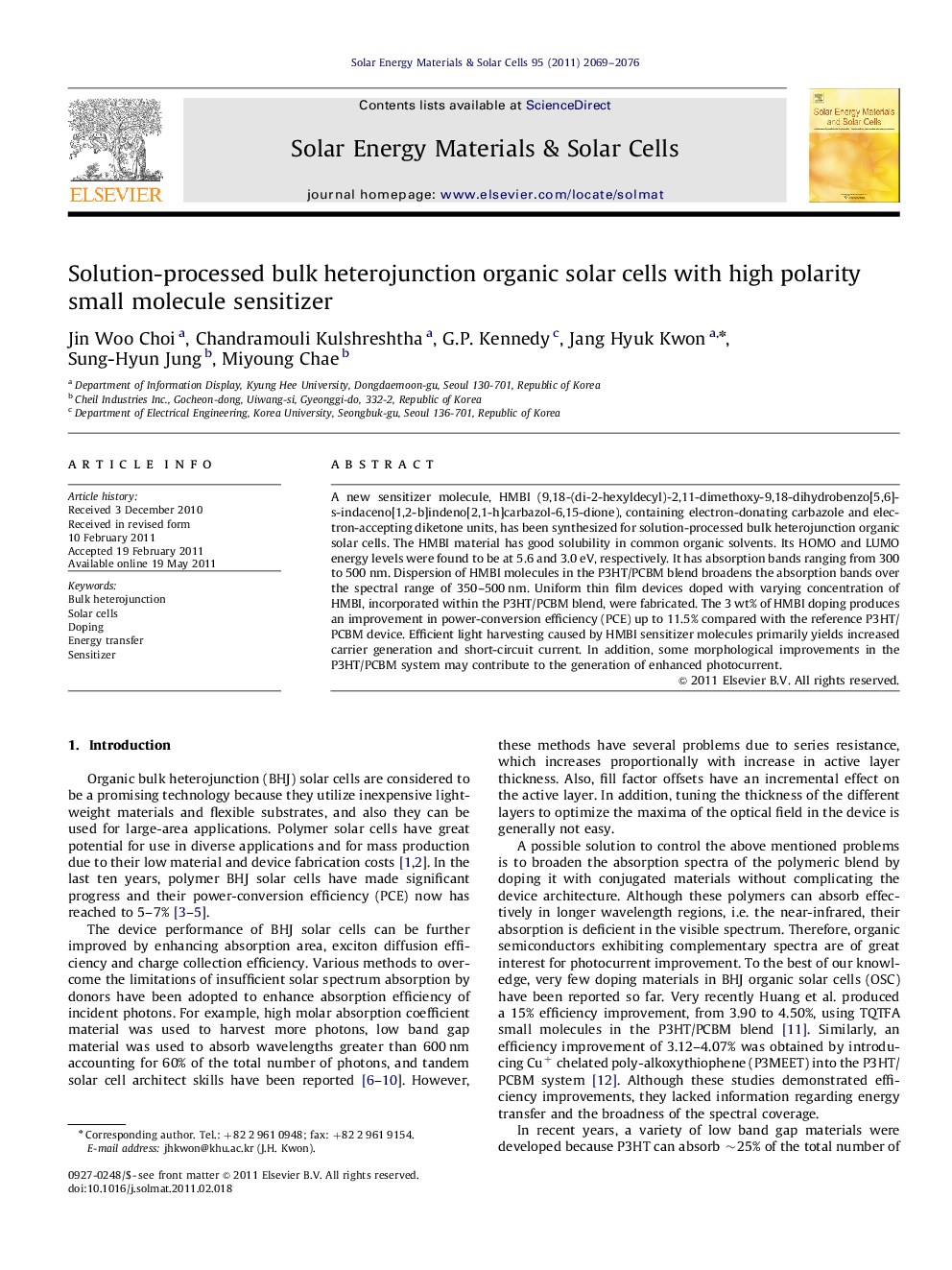| Article ID | Journal | Published Year | Pages | File Type |
|---|---|---|---|---|
| 78749 | Solar Energy Materials and Solar Cells | 2011 | 8 Pages |
A new sensitizer molecule, HMBI (9,18-(di-2-hexyldecyl)-2,11-dimethoxy-9,18-dihydrobenzo[5,6]-s-indaceno[1,2-b]indeno[2,1-h]carbazol-6,15-dione), containing electron-donating carbazole and electron-accepting diketone units, has been synthesized for solution-processed bulk heterojunction organic solar cells. The HMBI material has good solubility in common organic solvents. Its HOMO and LUMO energy levels were found to be at 5.6 and 3.0 eV, respectively. It has absorption bands ranging from 300 to 500 nm. Dispersion of HMBI molecules in the P3HT/PCBM blend broadens the absorption bands over the spectral range of 350–500 nm. Uniform thin film devices doped with varying concentration of HMBI, incorporated within the P3HT/PCBM blend, were fabricated. The 3 wt% of HMBI doping produces an improvement in power-conversion efficiency (PCE) up to 11.5% compared with the reference P3HT/PCBM device. Efficient light harvesting caused by HMBI sensitizer molecules primarily yields increased carrier generation and short-circuit current. In addition, some morphological improvements in the P3HT/PCBM system may contribute to the generation of enhanced photocurrent.
Graphical AbstractFigure optionsDownload full-size imageDownload as PowerPoint slideResearch highlights► Polar sensitizer (HMBI) for P3HT:PCBM solution-processed organic solar cells. ► HMBI doping in P3HT:PCBM causes efficient light harvesting. ► Generate more photocurrent by increased carrier generation. ► Proves energy transfer from HMBI to P3HT and PCBM. ► Produces 11.5% power conversion efficiency improvement.
